Kia Niro vs SsangYong Tivoli – Which model is better for everyday use?
Everyday use, family trips or long-distance drives – here’s where the differences show.
Discover whether Kia Niro or SsangYong Tivoli fits your lifestyle better.
Costs and Efficiency:
When it comes to price and running costs, the biggest differences usually appear. This is often where you see which car fits your budget better in the long run.
SsangYong Tivoli has a evident advantage in terms of price – it starts at 21400 £, while the Kia Niro costs 29100 £. That’s a price difference of around 7714 £.
Fuel consumption also shows a difference: Kia Niro manages with 2.40 L and is therefore decisively more efficient than the SsangYong Tivoli with 7 L. The difference is about 4.60 L per 100 km.
Engine and Performance:
Power, torque and acceleration say a lot about how a car feels on the road. This is where you see which model delivers more driving dynamics.
When it comes to engine power, the Kia Niro has a hardly perceptible edge – offering 180 HP compared to 163 HP. That’s roughly 17 HP more horsepower.
In terms of top speed, the Kia Niro performs slight better – reaching 185 km/h, while the SsangYong Tivoli tops out at 181 km/h. The difference is around 4 km/h.
There’s also a difference in torque: SsangYong Tivoli pulls minimal stronger with 280 Nm compared to 265 Nm. That’s about 15 Nm difference.
Space and Everyday Use:
Beyond pure performance, interior space and usability matter most in daily life. This is where you see which car is more practical and versatile.
Both vehicles offer seating for 5 people.
In curb weight, SsangYong Tivoli is barely noticeable lighter – 1375 kg compared to 1474 kg. The difference is around 99 kg.
In terms of boot space, the SsangYong Tivoli offers evident more room – 720 L compared to 451 L. That’s a difference of about 269 L.
In maximum load capacity, the Kia Niro performs slight better – up to 1445 L, which is about 5 L more than the SsangYong Tivoli.
When it comes to payload, Kia Niro minimal takes the win – 466 kg compared to 455 kg. That’s a difference of about 11 kg.
Who wins the race?
The Kia Niro proves to be dominates this comparison and therefore becomes our DriveDuel Champion!
Kia Niro is the better all-rounder in this comparison.
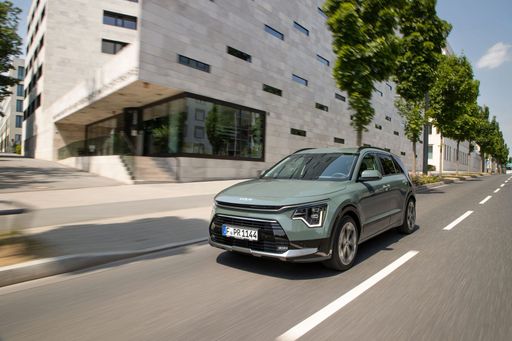 @ Kia Corporation
@ Kia Corporation
Kia Niro
Kia Niro
The Kia Niro blends clever packaging and modern styling into a compact crossover that’s refreshingly sensible for daily life. It’s comfortable, economical and packed with user‑friendly tech, so if you want a fuss‑free family car with a touch of green credibility, the Niro is worth a test drive.
details @ Kia Corporation
@ Kia Corporation
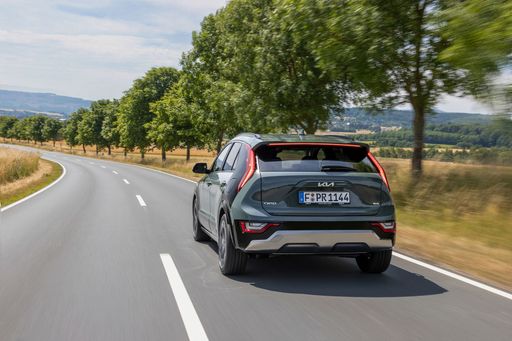 @ Kia Corporation
@ Kia Corporation
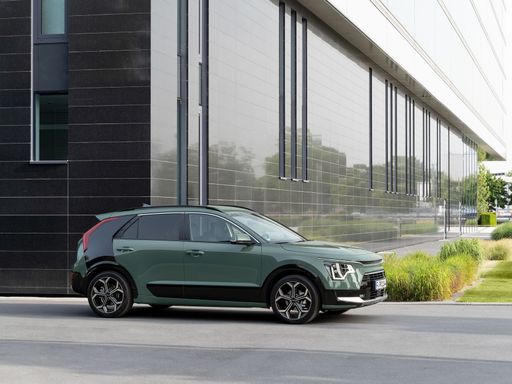 @ Kia Corporation
@ Kia Corporation
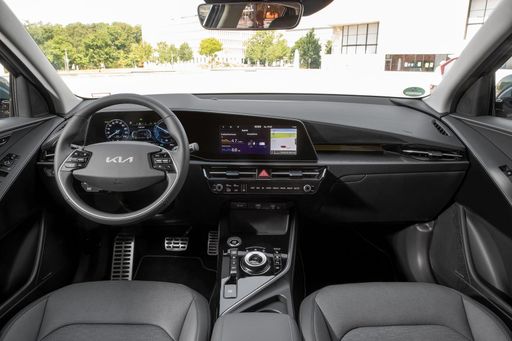 @ Kia Corporation
@ Kia Corporation
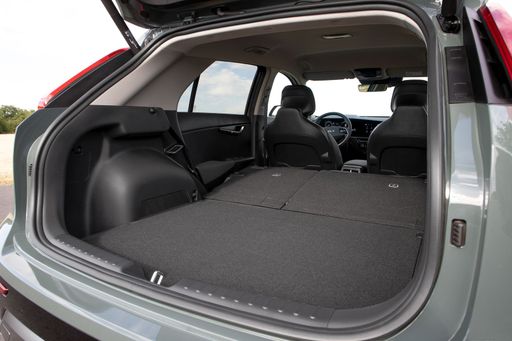 @ Kia Corporation
@ Kia Corporation
SsangYong Tivoli
The SsangYong Tivoli is a compact SUV that seamlessly blends style with practicality, making it an appealing choice for urban drivers. Its sleek design is complemented by a well-crafted interior, offering a comfortable and spacious experience for passengers. With its reliable performance and modern features, the Tivoli stands out as a versatile option in the competitive compact SUV market.
details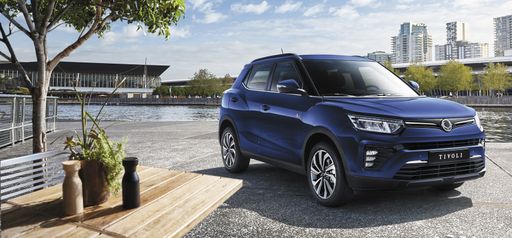 @ SsangYong Motor / KG Mobility
@ SsangYong Motor / KG Mobility
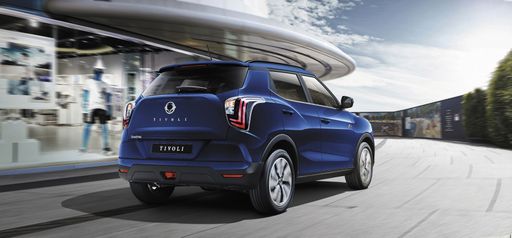 @ SsangYong Motor / KG Mobility
@ SsangYong Motor / KG Mobility
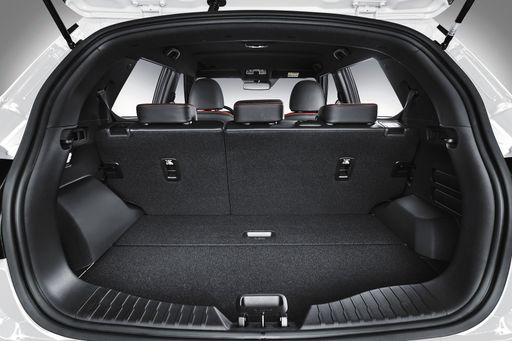 @ SsangYong Motor / KG Mobility
@ SsangYong Motor / KG Mobility
 @ Kia Corporation
@ Kia Corporation
|
 @ SsangYong Motor / KG Mobility
@ SsangYong Motor / KG Mobility
|
|
|
|
Costs and Consumption |
|
|---|---|
|
Price
29100 - 38600 £
|
Price
21400 - 30300 £
|
|
Consumption L/100km
2.4 - 4.9 L
|
Consumption L/100km
7 - 8.3 L
|
|
Consumption kWh/100km
-
|
Consumption kWh/100km
-
|
|
Electric Range
57 - 62 km
|
Electric Range
-
|
|
Battery Capacity
1.3 - 11.1 kWh
|
Battery Capacity
-
|
|
co2
53 - 111 g/km
|
co2
161 - 191 g/km
|
|
Fuel tank capacity
37 - 42 L
|
Fuel tank capacity
50 L
|
Dimensions and Body |
|
|---|---|
|
Body Type
SUV
|
Body Type
SUV
|
|
Seats
5
|
Seats
5
|
|
Doors
5
|
Doors
5
|
|
Curb weight
1474 - 1594 kg
|
Curb weight
1375 - 1492 kg
|
|
Trunk capacity
348 - 451 L
|
Trunk capacity
395 - 720 L
|
|
Length
4420 mm
|
Length
4225 - 4480 mm
|
|
Width
1825 mm
|
Width
1810 mm
|
|
Height
1545 mm
|
Height
1613 - 1646 mm
|
|
Max trunk capacity
1342 - 1445 L
|
Max trunk capacity
1115 - 1440 L
|
|
Payload
466 kg
|
Payload
425 - 455 kg
|
Engine and Performance |
|
|---|---|
|
Engine Type
Full Hybrid, Plugin Hybrid
|
Engine Type
Petrol
|
|
Transmission
Automatic
|
Transmission
Manuel, Automatic
|
|
Transmission Detail
Dual-Clutch Automatic
|
Transmission Detail
Manual Gearbox, Automatic Gearbox
|
|
Drive Type
Front-Wheel Drive
|
Drive Type
Front-Wheel Drive, All-Wheel Drive
|
|
Power HP
138 - 180 HP
|
Power HP
163 HP
|
|
Acceleration 0-100km/h
9.9 - 11.4 s
|
Acceleration 0-100km/h
-
|
|
Max Speed
170 - 185 km/h
|
Max Speed
175 - 181 km/h
|
|
Torque
265 Nm
|
Torque
260 - 280 Nm
|
|
Number of Cylinders
4
|
Number of Cylinders
4
|
|
Power kW
102 - 132 kW
|
Power kW
120 kW
|
|
Engine capacity
1580 cm3
|
Engine capacity
1497 cm3
|
General |
|
|---|---|
|
Model Year
2025
|
Model Year
2021 - 2024
|
|
CO2 Efficiency Class
C, B
|
CO2 Efficiency Class
F, G
|
|
Brand
Kia
|
Brand
SsangYong
|
Is the Kia Niro offered with different drivetrains?
The Kia Niro is available as Front-Wheel Drive.
The prices and data displayed are estimates based on German list prices and may vary by country. This information is not legally binding.
